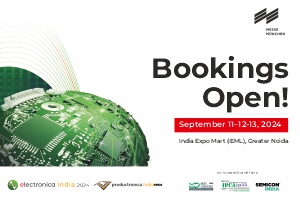As technology rapidly evolves, deep learning a subset of machine learning that uses neural networks to model and understand complex patterns in data has emerged as a transformative force across industries, powering innovations from autonomous vehicles to intelligent automation;
A deep learning framework is a software library that simplifies building and training neural networks by providing pre-built components like layers, optimizers, and tools for automatic differentiation. A deep learning framework operates in four key stages: model definition involves specifying the neural network architecture using a programming interface; forward propagation processes input data through the network to generate predictions; loss calculation and backpropagation compute errors and adjust weights using automatic differentiation; and optimization trains the model using algorithms like SGD or Adam, followed by deployment to various platforms. These frameworks support both training and inference, enabling smooth transition from experimentation to production.
Major AI applications are powered by well-known deep learning frameworks: Google Translate’s neural machine translation is powered on TensorFlow, whereas PyTorch facilitates OpenAI’s GPT models and Meta’s research. Keras is utilized in the classification of instructional images; MXNet makes it possible for Amazon Alexa to recognize voice; Caffe aids medical image analysis; JAX handles physics simulations and protein modeling; and ONNX helps deploy models across platforms like PyTorch to TensorFlow for edge devices
Here are the top 10 deep learning frameworks-
- TensorFlow
Developed by Google Brain, TensorFlow is put forward across many consumers as the most famous deep learning framework in 2025. It was first used by Google internally for some research and development projects back in 2015, but after seeing the immense potential of the framework, it was decided that an official public release would be made. It is a highly scalable and flexible framework supporting multiple programming languages and hardware platforms including CPUs, GPUs, and TPUs. TensorFlow sees many applications including image recognition, speech synthesis, and fraud detection. Its lightweight mobile offerings TensorFlow Lite and TensorFlow.js bring AI to phones and browsers.
- PyTorch
PyTorch, created by Meta AI, is beloved by researchers for dynamic computation and intuitive design. Initiated in 2016 by a group of individuals from Facebook’s AI lab comprising Adam Paszke, Sam Gross, Soumith Chintala, and Gregory Chanan, the framework powers the latest NLP models such as ChatGPT and BERT. It is largely deployed in academic research, autonomous driving systems, and in real-time computer vision applications.
- Keras
Keras is designed to be a high-level API for easily and quickly building and training neural networks. First made public in 2015 as part of the ONEIROS project (Short for Open-ended Neuro-Electronic Intelligent Robot Operating System).
Being a frontend for TensorFlow, it is great for beginners and rapid prototyping. Because of the simple handling of pre-trained models, Keras is commonly found in tasks involving sentiment analysis, recommendation engines, and medical image classification.
- MXNet
MXNet excels for multi-GPUs setup, supported now by Apache Software Foundation and Amazon. It is used for real-time object detection in retail, multilingual NLP models, and voice assistants, including Alexa. The fact that it supports multiple languages means it’s an excellent option for global development teams.
- Caffe
Created by the Berkeley Vision and Learning Center (BVLC), Caffe is a deep learning framework well renowned for its speed and modularity in image processing tasks. It found popular uses with an expressive architecture and efficiently implemented CNNs. Caffe is popular for real-time image classification, facial recognition systems, and visual search engines.
- JAX
Created by Google Research, JAX is a pretty cool toolkit. It offers NumPy-like syntax combined with automatic differentiation and GPU/TPU adaptations. It can be used for scientific computations, custom ML algorithms, and large-scale training of neural networks.
- Theano
Theano was one of the first frameworks for deep learning, developed by the Montreal Institute for Learning Algorithms (MILA). It discontinued maintenance after some time. Today, though mostly abandoned, Theano’s legacy still lives in the other popular frameworks like TensorFlow and PyTorch. Theano is still used actively for symbolic differentiation and efficient GPU numerical computation in some academic research.
- MindSpore
MindSpore, developed by Huawei, is targeted for AI across cloud, edge, and devices. It finds applications in natural language processing, computer vision, and autonomous systems. Due to its favorable attention toward privacy protection and efficient deployment, MindSpore is catching up in sectors like healthcare and smart manufacturing.
- Deeplearning4j (DL4J)
Developed by Skymind, DL4J is tailored for Java-based enterprise AI solutions. It’s applied in financial modeling, cybersecurity threat detection, and customer churn prediction. Its integration with Hadoop and Spark makes it ideal for big data analytics.
- Chainer
Developed by Preferred Networks in Japan, Chainer is recognized for its flexibility in defining networks of all kinds. Reinforcement learning for gaming purposes, bioinformatic research, and robotics are ways in which this application develops capabilities. Its “define-by-run” architecture is supposed to allow dynamic learning systems. It is loved by the experimental kinda-AI set.
Conclusion:
The importance of selecting a framework may increase as deep learning continues to influence the technologies of the future. There are several different ecosystems, each with its own unique set of advantages. TensorFlow chose production-grade scalability, while the other chose a research-friendly strategy. The combination of cloud integration, open-source innovation, and hardware acceleration will guarantee that deep learning remains at the forefront of AI advancements across a range of industries well into 2025.








